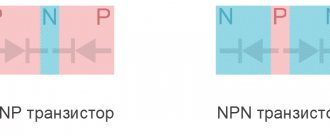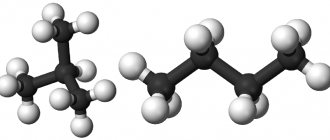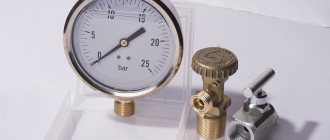Nobody likes to be under pressure. And it doesn’t matter which one. Queen also sang about this together with David Bowie in their famous single “Under pressure.” What is pressure? How to understand pressure? How is it measured, by what instruments and methods, where is it directed and what does it press on? The answers to these and other questions are in our article about pressure in physics and more.
Pressure in physics
If the teacher puts pressure on you by asking tricky problems, we will make sure that you can answer them correctly. After all, understanding the very essence of things is the key to success! So, what is pressure in physics?
A-priory:
Pressure is a scalar physical quantity equal to the force acting per unit surface area.
In the international SI system, it is measured in Pascals and is denoted by the letter p . The unit of measurement for pressure is 1 Pascal. Russian designation is Pa, international designation is Pa.
By definition, to find pressure, you need to divide the force by the area.
Any liquid or gas placed in a vessel exerts pressure on the walls of the vessel. For example, borscht in a pan exerts some pressure on its bottom and walls. Formula for determining fluid pressure:
where g is the acceleration of gravity in the gravitational field of the earth, h is the height of the borscht column in the pan, the Greek letter “rho” is the density of the borscht.
One of the most important properties of liquids is isotropy. This means that, according to Pascal's law , the pressure it produces is transmitted equally in all directions of a liquid. By the way, read more about liquids, their properties and movement in our material about Bernoulli’s equation.
The most common device for determining pressure in everyday life is a barometer. But how is blood pressure measured? In addition to pascal, there are other non-system units of measurement:
- atmosphere;
- millimeter of mercury;
- millimeter of water column;
- meter of water column;
- kilogram-force.
Depending on the context, different non-systemic units are used.
For example, when you listen to or read a weather forecast, there is no talk of pascals. They talk about millimeters of mercury. One millimeter of mercury is 133 Pascals. If you drive, you probably know that the normal pressure in the wheels of a car is about two atmospheres.
Tire pressure is gas pressure. It is caused by collisions of air molecules with the surface of the tire.
Legislative standards
When drawing up a project to connect a residential building to a gas main, many technical parameters are taken into account. To do this, it is important to know the type of pipe laying and the amount of fuel pressure. Based on such data, the gas distribution station makes a decision to issue approval for the project.
Gas equipment Source profile.ru
Natural gas is one of the cheapest and most environmentally friendly types of fuel, so it is widely used in everyday life and industry. The ever-increasing number of gas users necessitates the development of new laws and regulations that regulate its use. Important documents in the legislation include determining the standard for connecting a house to the gas main.
Construction of a gas pipeline Source biz.liga.net
In 2010, the Russian Federation adopted regulations that are:
- Official documentation, the requirements of which are mandatory;
- Subject to control and inspection by supervisory authorities to ensure equipment safety;
- Grounds for litigation and filing claims;
- A significant reason for imposing penalties in case of violations.
Placement of gas pipe Source geoinfo.ru
Atmosphere pressure
The atmosphere is a gas, or more precisely, a mixture of gases, which is held near the Earth due to gravity. The atmosphere passes into interplanetary space gradually, and its height is approximately 100 kilometers.
How do we understand the expression “atmospheric pressure”? Above every square meter of the earth's surface there is a hundred-kilometer column of gas. Of course, the air is clear and pleasant, but it has a mass that presses on the surface of the earth. This is atmospheric pressure.
Normal atmospheric pressure is considered to be 101325 Pa. This is the pressure at sea level at 0 degrees Celsius. 766 high exerts the same pressure at the same temperature on its base .
The higher the altitude, the lower the atmospheric pressure. For example, at the top of Mount Chomolungma it is only one-fourth of normal atmospheric pressure.
Everest. At its top the pressure is 4 times less than at the foot
Rules for using gas appliances
The operation of gas equipment must occur in accordance with state standards. It is important to follow the established rules when using the equipment:
- Maintenance of internal and external networks is carried out by qualified specialists who have a license to carry out this type of work;
- It is prohibited to replace network parts and gas equipment without approval from the competent authorities;
- The equipment should be installed only by professional workers; the installation project must first be approved by the relevant organization.
Self-repair or replacement of equipment is not permitted; all work must be performed exclusively by licensed specialists. Otherwise, there may be a risk of an emergency. To prevent gas leaks and other unpleasant consequences, it is important to contact authorized personnel.
Arterial pressure
Another example where we encounter pressure in everyday life is when measuring blood pressure.
Blood pressure is blood pressure, i.e. the pressure that blood exerts on the walls of blood vessels, in this case arteries.
If you measure your blood pressure and it is 120 over 80 , then everything is fine. If it ’s 90 by 50 or 240 by 180 , then you definitely won’t be interested in understanding how this pressure is measured and what it even means.
Blood pressure - the pressure of blood on the walls of the arteries
However, the question arises: 120 to 80 of what exactly? Pascals, millimeters of mercury, atmospheres or some other units of measurement?
Blood pressure is measured in millimeters of mercury. It determines the excess of fluid pressure in the circulatory system above atmospheric pressure.
Blood exerts pressure on the vessels and thereby compensates for the effect of atmospheric pressure. If it were otherwise, we would simply be crushed by the huge mass of air above us.
But why are there two numbers in the blood pressure measurement?
By the way! For our readers there is now a 10% discount on any type of work
The fact is that the blood does not move evenly in the vessels, but in jerks. The first number (120) is called systolic pressure. This is the pressure on the walls of blood vessels at the moment of contraction of the heart muscle, its magnitude is the greatest. The second number (80) determines the lowest value and is called diastolic pressure.
During the measurement, the values of systolic and diastolic pressure are recorded. For example, for a healthy person, the typical blood pressure value is 120 per 80 millimeters of mercury. This means that the systolic pressure is 120 mm. rt. Art., and diastolic – 80 mm Hg. Art. The difference between systolic and diastolic pressure is called pulse pressure.
Classification of gas pipelines
In the system of providing the population with natural gas, an important role is played by the construction and maintenance of gas pipelines through which fuel is supplied to the end consumer. The fixed assets of gas companies are invested in this equipment, and it is the networks with low and medium pressure that are longer. The modern classification of gas pipelines includes the following types of gas pipelines:
- High pressure category 1 (from 1.2 MPa). These are mainly large highways along which fuel is transported between populated areas and also distributed among consumer groups. Such pipes are laid to the gas distribution station, where the pressure decreases.
- High pressure category 2 (from 0.3 to 1.2 MPa). Such gas pipelines are located within cities and villages, through which gas is transported to boilers and other equipment.
- Medium pressure (from 0.05 to 0.3 MPa). Most industrial consumers receive fuel from this type of pipeline.
- Low pressure (up to 0.05 MPa). This type of pipe is typical for gas supply to residential buildings and apartments.
Physical vacuum
Vacuum is the absence of pressure. More precisely, its almost complete absence. Absolute vacuum is an approximation, like an ideal gas in thermodynamics and a material point in mechanics.
Depending on the concentration of the substance, low, medium and high vacuum are distinguished. The best approximation to a physical vacuum is outer space, in which the concentration of molecules and pressure are minimal.
There is an almost complete absence of pressure in space
Pressure is the main thermodynamic parameter of the state of the system. The pressure of air or other gas can be determined not only using instruments, but also using equations, formulas and the laws of thermodynamics. And if you don’t have time to figure it out, the student service will help solve any problem of determining pressure.
Storage and transportation of gases
If you need to transport a significant amount of gas from one place to another, or when gases need to be stored for a long time, they are placed in special durable metal vessels. Due to the fact that pressure increases as volume decreases, the gas can be pumped into a small container, but it must be very durable.
Vessels designed to transport gases can withstand high pressures. Therefore, with the help of special pumps (compressors), significant masses of gas can be pumped there, which under normal conditions would occupy hundreds of times more volume.
Since the gas pressure in the cylinders is very high even at room temperature, they should never be heated. For example, keep them in direct sunlight or try to make a hole in them in any way, even after use.
How does the fuel supply turn off?
Any system requires periodic maintenance, which includes replacing certain parts and monitoring the condition of components and assemblies. To make repairs easy and safe, the gas supply must be turned off during work. To ensure a quick shutdown of fuel flow, industrial and household networks are equipped with special valves, otherwise called plug valves.
Disconnection devices are usually installed outside the building; a protective cabinet may be used for this purpose. If you need to disconnect the building from the gas supply, simply turn the valve. Valves are usually installed:
- At gas distribution points at the points of entry and exit of pipes;
- When dividing highways into local city networks;
- At the beginning of an object blocking the path - for example, in front of a railway, highway or pond.
On external gas pipelines, shut-off devices are mounted in special wells. Lens compensators are installed next to the devices. These devices are used to monitor gas levels, as well as to simplify work with shut-off valves. Installation of wells is permitted at a distance of at least 2 meters from the nearest object.
On residential buildings and other structures, valves are located on the external wall, and a distance of at least 1 meter from the openings is maintained. The number of shut-off devices does not depend on the pressure in the system, the length of the pipes or the degree of branching of the network. The presence of each device must be economically justified; you should try to get by with the minimum number for the facility.
Sewage pipelines
Sewage pipelines are used for the removal and discharge of wastewater outside industrial facilities and populated areas.
In pressure sewer pipelines, the medium moves under excess pressure, in non-pressure pipelines - by gravity.
Sewage systems according to SNiP 2.04.01-85 are classified:
- Household - used to move wastewater from sanitary installations (toilets, bathtubs, washbasins, swimming pools, etc.);
- Industrial - used for the disposal of various types of industrial wastewater;
- Combined - used to move domestic and industrial wastewater “together”. If possible and permitted, their joint transportation and subsequent cleaning;
- Internal drains - used to remove rain and melt water from the roof of a building.
Source
Security zones of other networks
It must be taken into account that water supply, sewerage and other communications also have their own sanitary protection zones. They are also called security guards. Yes, the gas pipeline security area already takes this into account.
Underground heating network
However, before carrying out any work, it is important to take into account such parameters for each network so that nothing is left unattended. And so that in the end it does not turn out that some network does not fit in relation to others
It is important to take into account that the sanitary zone near certain communications must be installed in each direction from the axis. For each such system with a security zone there is its own SNiP (SP) table with standards for distances to certain objects
You should always be guided by building codes and regulations regarding how many meters you should retreat in each direction.
Nuances of security zones
It is also important to consider that a main gas pipeline is a completely different story than a gas distribution station or hub. And the security zone in high-pressure routes reaches 50 meters
Size of the main pipe protection zone
As a rule, these are pipes of large diameter. With such a width, in the event of an accident, the leak will be much larger and more intense. This is due to the volume of the substance inside and the speed of its transportation.
The rules for the location of security zones apply everywhere, both in Moscow and in the Nizhny Novgorod region. After all, according to experts, this pipeline has the status of a hazardous production facility (hazardous production facility).
Overhead gas pipeline
And it’s not just about the serious legal consequences for anyone who violates the protection zone. Judging by the practice of decades, if gas communications are laid incorrectly, there is a possibility of encountering risks that will pose a threat to the lives of others.
Compressor stations
Compressor stations are needed to maintain pressure levels and transport the required volume of gas through the pipeline. There the gas undergoes purification from foreign substances, drying, increasing pressure and cooling. After undergoing processing, the gas under a certain pressure enters the gas pipeline.
Compressor stations, along with gas distribution stations and points, are part of the complex of above-ground structures of the main gas pipeline.
Compressor units are transported to the construction site in the form of blocks completely ready for assembly. They are being built at a distance of approximately 125 kilometers from each other.
The compressor complex includes:
- the station itself;
- repair and maintenance and service and maintenance units;
- the area where dust collectors are located;
- cooling tower;
- water container;
- oil farming;
- gas-cooled devices, etc.
A residential village is usually built next to the compression plant.
Such stations are considered a separate type of technogenic influence on the natural environment. Studies have shown that in the area of compressor installations, the concentration of nitrogen oxide in the air exceeds the maximum permissible level.
They are also a powerful source of noise. Scientists have found that prolonged exposure to noise from a compressor station causes disturbances in the human body, and, as a result, causes various diseases and can lead to disability. In addition, noise forces animals and birds to move to new habitats, which leads to their overcrowding and a decrease in the productivity of hunting grounds.
General formula
From the classical definition of what pressure is, a general formula for calculating it can be derived. It will look like this:
P = F/S
Where F is the pressure force, and S is the surface area on which it acts. That is, in other words, the formula for finding pressure is the force acting on a certain surface, divided by the area of this very surface.
As can be seen from the formula, when calculating pressure the following principle always applies: the smaller the space affected by the force, the greater the amount of pressing force on it and vice versa.
This can be illustrated with a simple real-life example: it is easiest to cut bread with a sharp knife, because a sharp knife has a sharpened blade, that is, the surface area S from the formula is minimal, which means that the pressure of the knife on the bread will be maximally equal to the applied force F of the person holding the knife . But cutting bread with a dull knife is more difficult, since its blade has a large surface area S, and the pressure of the knife on the bread will be less, which means that in order to cut yourself a piece of bread you need to apply a greater amount of force F.
The general formula for pressure, in fact, perfectly describes the formula for the pressure of a solid body.










